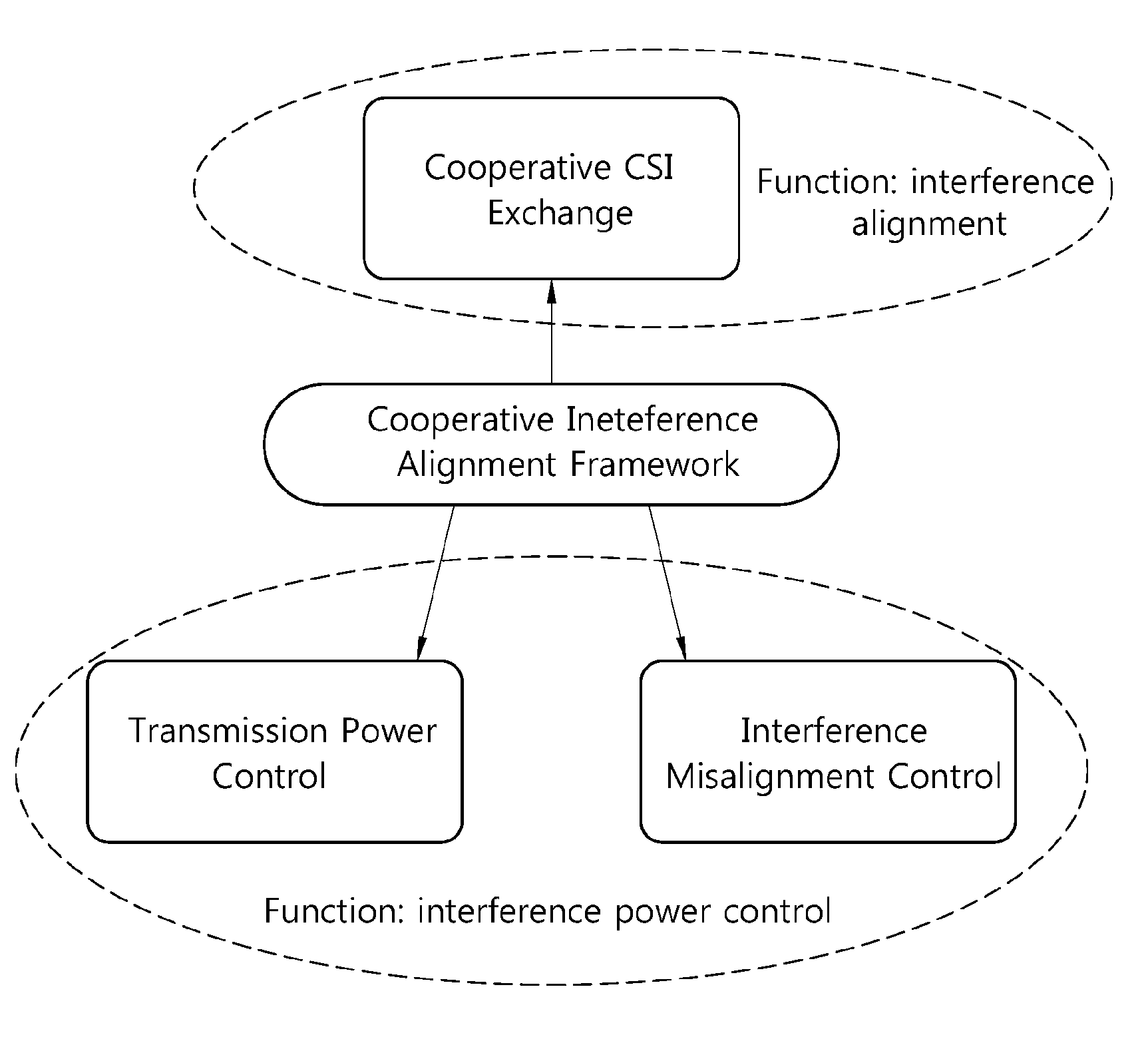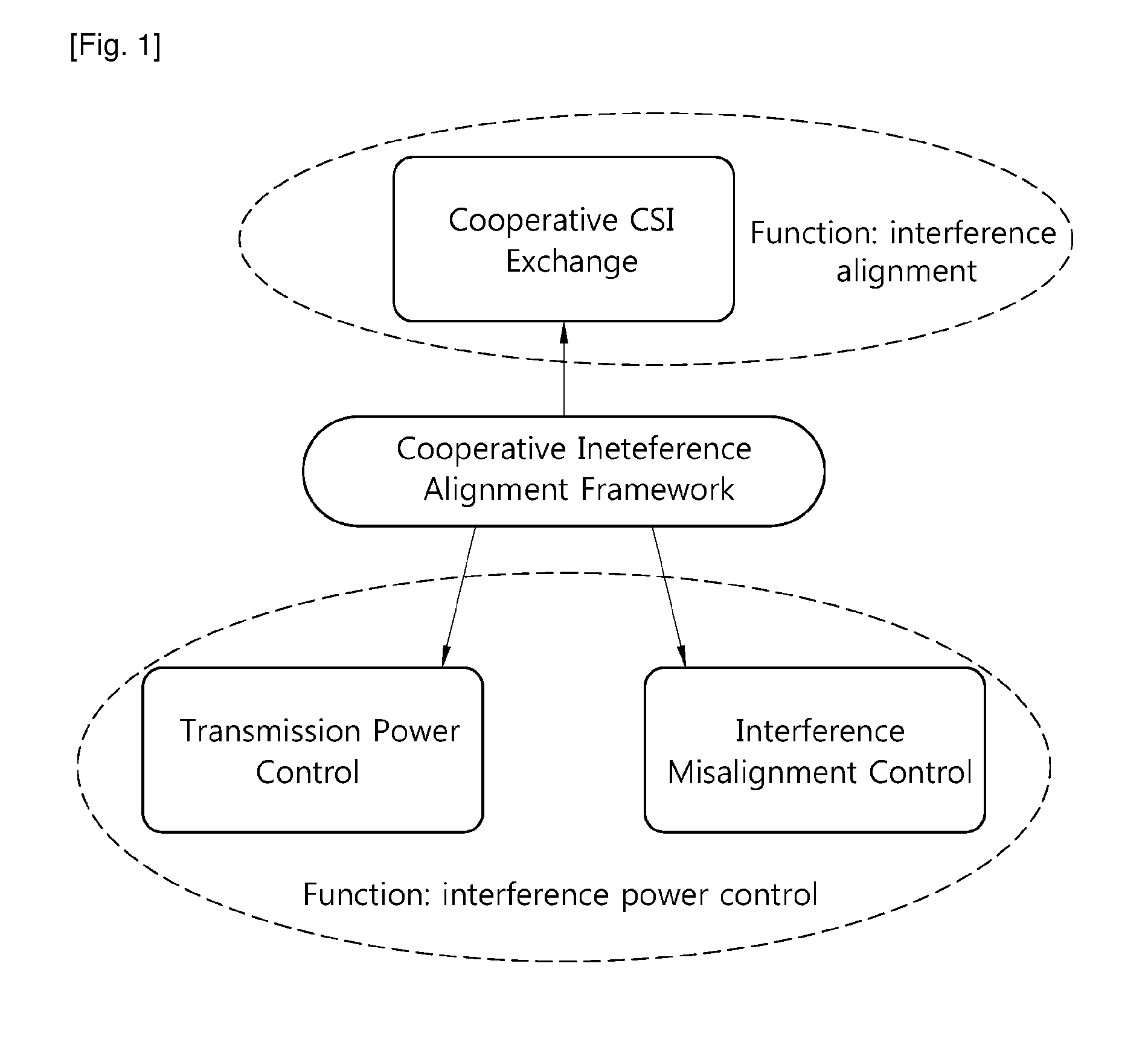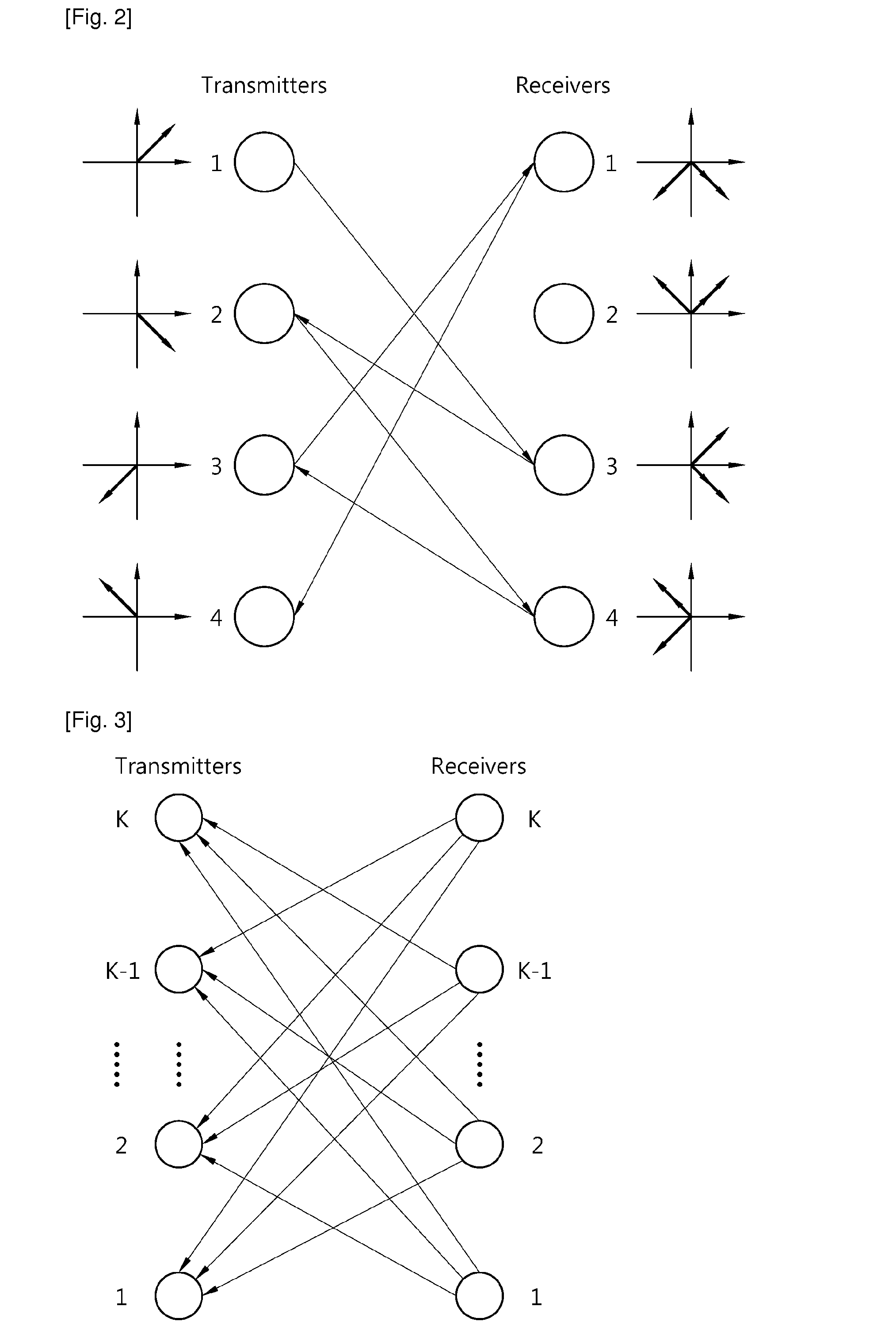Method for interference alignment in wireless network
- Summary
- Abstract
- Description
- Claims
- Application Information
AI Technical Summary
Benefits of technology
Problems solved by technology
Method used
Image
Examples
case 1
A. M≦N and D*≦N
[0209]For this case, there are extra DoF at each receiver such that achieving D* does not require IA(interference alignment). Also there is no need of CSIT for achieving D*. Although using any random precoders at transmitter, all operation to cancel interferences can be done at receiver side.
case 2
B. M≦N and D*>N
[0210]If there exists achievable DoF vector d=[d1,d2,d3] to satisfy one among the following two constraints, then the interference coordination method explained below can achieve the optimal integer DoF(D*) and reduction of CSI error amplication.
[Contraints 1]
2d1+3d2≦2N when d1<d2 and d3=d2 1.
3d1+2d3≦2N when d1=d2 and d1<d3. 2.
[0211]Under either of the above two constraints, D* can be achieved by the following interference coordination method based on interference alignment. Above constraints can be derived intuitively. Let consider following parameter,
λ=d1+d2+d3−N
, where it is the number of overlap dimension means that at least λ beams should be aligned at each receiver. CSI error amplification issue comes from coupling condition of IA. If λ=di, all beams at each transmitter are coupled with other beams from other 2 transmitters, which results in the requirement of all cross link CSIT at all transmitters. However, if 2λ≦d2, i.e. 2d1+3d2≦2N, when d12, d3=d...
case 3
C. M>N and D*
[0216]For this case, there are extra DoF at each transmitter such that achieving D*. Differently case 1, this case require CSIT. By using reciprocity, feedback overhead can be efficiently reduced. We propose interference coordination method 2 comprising below steps.
[0217]1. Step 1: Each receiver determines receiver beamformer Ui first ramdomly or maximizing desired channel SINR.
[0218]2. Step 2: Each receiver feeds back UiHHi,k, k≠i to corresponding transmitters.
[0219]3. Step 3:
vim=vm[∑k=1,k≠i3PdiHk,iHUkUkHHk,i],m=1,…di
where vm[A] is the eigenvector corresponding to the dth smallest eigenvalue of A. In the proposed method each receiver feeds back diM non-zero coefficient to 2 transmitters. Total feedback overhead for the proposed algorithm is 6D*M.
PUM
 Login to View More
Login to View More Abstract
Description
Claims
Application Information
 Login to View More
Login to View More - R&D
- Intellectual Property
- Life Sciences
- Materials
- Tech Scout
- Unparalleled Data Quality
- Higher Quality Content
- 60% Fewer Hallucinations
Browse by: Latest US Patents, China's latest patents, Technical Efficacy Thesaurus, Application Domain, Technology Topic, Popular Technical Reports.
© 2025 PatSnap. All rights reserved.Legal|Privacy policy|Modern Slavery Act Transparency Statement|Sitemap|About US| Contact US: help@patsnap.com



